06 Nov 2021 - {{hitsCtrl.values.hits}}
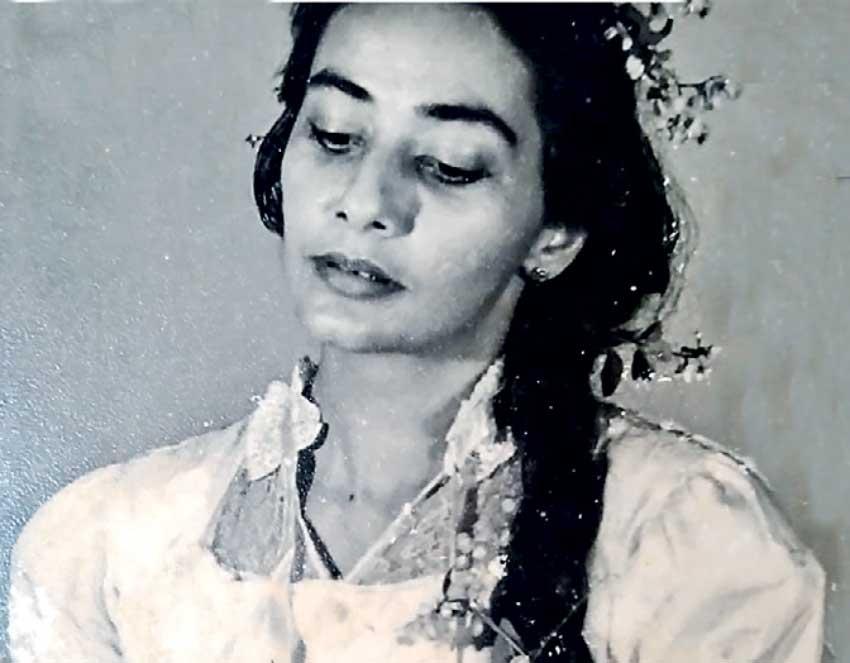
 In our teens, we did not have the luxury of mobile phones and no one had even dreamt of Zoom, Teams or group chats on WhatsApp. If we wanted to meet our friends outside of school, the only option we had was to visit each other at our respective homes.
In our teens, we did not have the luxury of mobile phones and no one had even dreamt of Zoom, Teams or group chats on WhatsApp. If we wanted to meet our friends outside of school, the only option we had was to visit each other at our respective homes.
When I was preparing to sit for my Advanced Level examinations, I asked my friend Richard de Zoysa for some help with my English Literature. Richard, who was a brilliant student, knew everything about Shakespeare, Austen, Dickens and any other author you could think of. He did not hesitate for a moment and very kindly invited me to his place for a few tutorials. At that time, he and his mother lived at the end of Kynsey Road in a flat that was situated upstairs of a massive old house which had the most wonderful wooden floors, large carved ornate staircases and huge doors.
Sometime during one of these study sessions, I happened to look out of the window at the small courtyard at the back of this house and I saw a statuesque woman walking down to collect some washing that had been hung out to sun. I immediately turned to Richard and asked him who it was. But, by the time he got to the window, she had disappeared. We continued reading Shakespeare’s Othello which was our Advanced Level text that year. Studying was hardly the appropriate word as we were in hysterics making our own story out of the text. “The Moor’s trumpet” had entirely different connotations to us, and there the studying stopped, and the laughter began.
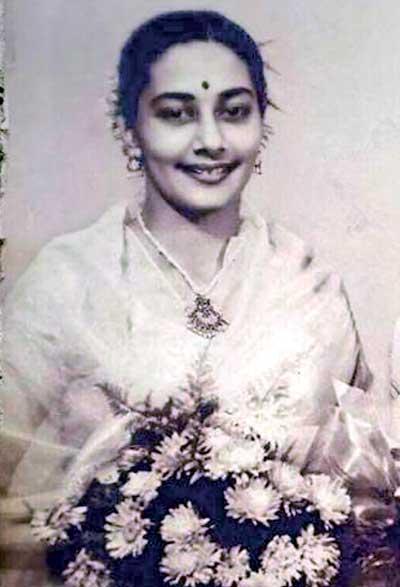
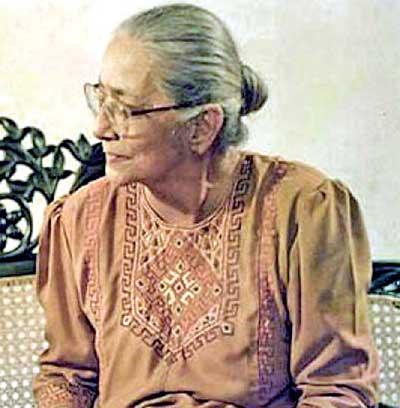 Sometime later that day I found myself alone in the hall of that massive house, when suddenly the set of double doors crashed open and there she was again, standing majestically, dressed in a kaftan, her raven black hair falling down to her waist, a tiny red pottu on her forehead, a slender long neck balancing a face that was so perfectly shaped, one would have thought that a statue had come alive. My mouth fell-open. I was awestruck. It was as if I was gazing into the face of Nefertiti! I was terrified thinking that we had disturbed this woman with our raucous laughter. Just then Richard came back in and said, ‘Ah Zoysa, this is Chandri,” and then she smiled. A smile that radiated warmth and affection in equal measure. A smile which made you feel like a million arms were hugging you at the same time. I was enchanted for life. This was my first encounter with Richard’s mother; Dr Manorani Saravanamuttu!
Sometime later that day I found myself alone in the hall of that massive house, when suddenly the set of double doors crashed open and there she was again, standing majestically, dressed in a kaftan, her raven black hair falling down to her waist, a tiny red pottu on her forehead, a slender long neck balancing a face that was so perfectly shaped, one would have thought that a statue had come alive. My mouth fell-open. I was awestruck. It was as if I was gazing into the face of Nefertiti! I was terrified thinking that we had disturbed this woman with our raucous laughter. Just then Richard came back in and said, ‘Ah Zoysa, this is Chandri,” and then she smiled. A smile that radiated warmth and affection in equal measure. A smile which made you feel like a million arms were hugging you at the same time. I was enchanted for life. This was my first encounter with Richard’s mother; Dr Manorani Saravanamuttu!
Manorani joined us for the rest of our study session adding to the mirth whilst sharing various stories about interpretations and portrayals of Shakespearean characters during her days as an actress, thus contributing to our learning and heightening my inquisitiveness about her life. Richard called her ‘Zoysa’ and she in turn called him ‘Zoysa.’ Much like my relationship with my mother, Richard and his mother were the best of friends. It was always wonderful to see them together. Their banter and arguments were of a level that was beyond the scope of my simple understanding.
Very soon, most of Richard’s friends were entranced by his mother and she in turn treated us like her extended family. Usually, when anyone of us fell ill, we were taken to our family doctor, but once we began to know Aunty Manorani (which is how all of us addressed her), we started bringing our parents and other family members to see her. She was a doctor who had her surgeries in the poorest areas around Colombo which made her popular with communities who preferred their women to be seen by female doctors. She had a wonderful manner with her patients which my mother described by saying, ‘looking at her is enough to make you well.’
That particular ‘manner’ that she had was very special. This so called ‘manner’ is a rarity among the younger generation of doctors one encounters these days. Manorani had a special touch and had it in spades. Manorani was the daughter of Manickam Saravanamuttu and Mona Kingston. (Mona was the daughter of two British missionaries who tragically died en-route to Australia. Due to these unexpected and tragic circumstances, their child (Mona) ended up in Ceylon where she was adopted by the de Livera family.
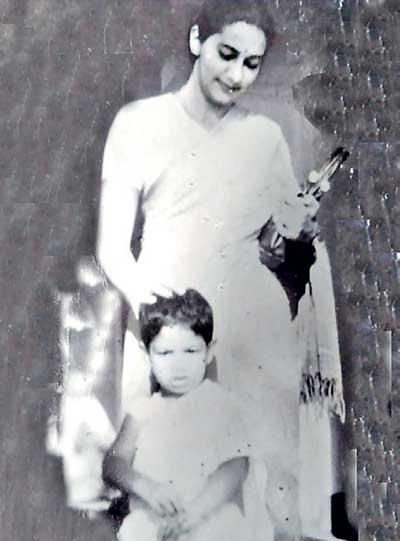 Soon after qualifying as a doctor, Manorani married the famous Sri Lankan actor and playwright Lucian de Zoysa. Richard was their son. Her marriage opened the way to a career in the theatre especially in plays that were written by her husband. The Brazen Palace (the story of Duttugamunu) and Fortress in the Sky (the story of Kashyapa) are two of the better-known plays that he wrote with her in mind. There were also numerous productions of Shakespearean plays that Lucian directed in which they both performed in. She played Ophelia to Lucian’s Hamlet, Lady Macbeth to his Macbeth and Desdemona to his Othello. The list could go on.
Soon after qualifying as a doctor, Manorani married the famous Sri Lankan actor and playwright Lucian de Zoysa. Richard was their son. Her marriage opened the way to a career in the theatre especially in plays that were written by her husband. The Brazen Palace (the story of Duttugamunu) and Fortress in the Sky (the story of Kashyapa) are two of the better-known plays that he wrote with her in mind. There were also numerous productions of Shakespearean plays that Lucian directed in which they both performed in. She played Ophelia to Lucian’s Hamlet, Lady Macbeth to his Macbeth and Desdemona to his Othello. The list could go on.
Richard’s brilliance as an actor was hugely influenced and ably supported by both his parents even after they divorced. This support was offered in various ways. Take for instance the beautiful oval shaped dining table that was one of the few pieces of furniture that Manorani owned. This table was carted off to the Lionel Wendt for practically every play that required a table as part of its stage set. This table was used as the rock on which the Faune was languishing on, when it spots the nymphs in Indira Gunerekera’s production of the ballet, “The Afternoon of the Faune.” It was part of the tree in Oosha Saravanamuttu’s ballet, “Adam & Eve,” and it was also the rock on which the two genies appeared on, in a production of ‘Aladdin.’ It was used in the Matchmaker, and in The Owl and the Pussycat and many more plays. Manorani would return after an exhausting day at her surgery and she’d have to balance her plate on her lap to have her breakfasts and dinners. This to me, remains an unseen sacrifice for the sake of theatre even after her time as an actress had ended, but of course her son had taken hold of those reins with a passion, so she accepted the frequent disappearance of her dining table, entirely on her stride.
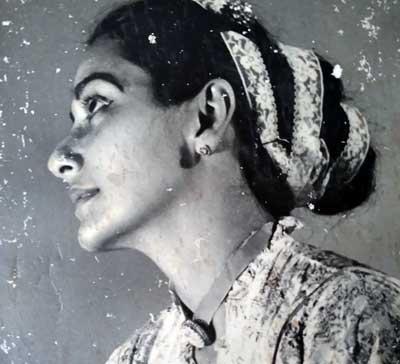 Manorani was also a brick when it came to having fun. I remember being in her car during the days of the Royal-Thomian match when she was really getting into the spirit of the season. She used to make the car shake by applying the brakes to the beat of some song or the other whilst singing at the top of her voice. Her son and several of his friends (including me) were offering vocal support. During the Christmas season she loved singing carols. I will never forget hearing something akin to caterwauling outside our house on one 24th December night. Three cars (full of friends who had been encouraged by her) driven by her, Suresh Thambapillai and Jagdesh Mirchandani, all dressed in costumes from various plays (on this occasion Manorani was dressed at Morgan La Fey in a costume from Camelot) were on our doorstep singing Christmas carols! Once they woke me up and put me in a costume they had brought along, we proceeded to disturb more of our friends until dawn.
Manorani was also a brick when it came to having fun. I remember being in her car during the days of the Royal-Thomian match when she was really getting into the spirit of the season. She used to make the car shake by applying the brakes to the beat of some song or the other whilst singing at the top of her voice. Her son and several of his friends (including me) were offering vocal support. During the Christmas season she loved singing carols. I will never forget hearing something akin to caterwauling outside our house on one 24th December night. Three cars (full of friends who had been encouraged by her) driven by her, Suresh Thambapillai and Jagdesh Mirchandani, all dressed in costumes from various plays (on this occasion Manorani was dressed at Morgan La Fey in a costume from Camelot) were on our doorstep singing Christmas carols! Once they woke me up and put me in a costume they had brought along, we proceeded to disturb more of our friends until dawn.
On another occasion she arrived at the Royal-Thomian match along with Sakuntala Rajagopal, Oosha Saravanamuttu and Corrine De Zoysa. All of them were dressed to kill. Manorani had the traditional jasmines in her hair while the others were sporting massive hairdo’s along with some spectacular jewellery. All of them were in stunning saris. The boy’s tent went quiet at the sight of this fantastical array of women, even the papara band was stunned into a momentary silence. No one was playing any attention to the match; such was the effect of Manorani and her cohort.
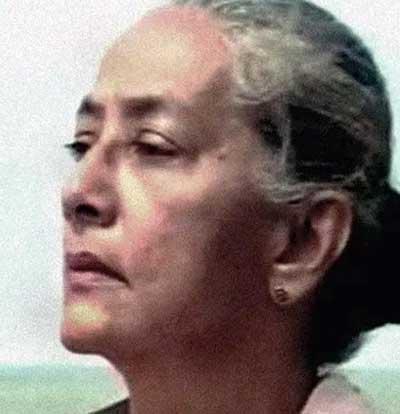 And then they started cheering for the Thomian’s and all hell broke loose; noise-wise! Having such women backing our side gave an extra boost to the cheering even though the match ended in a boring draw.
And then they started cheering for the Thomian’s and all hell broke loose; noise-wise! Having such women backing our side gave an extra boost to the cheering even though the match ended in a boring draw.
Most of Richard’s friends used to hang around at her house even when he was not there. All of us felt comfortable discussing our most intimate issues with Aunty Manorani. This was at a time when we were either unsure or not forthcoming about our sexuality or indeed facing problems with sex itself and she was whom we used to turn to for guidance and advice. When it came to our outlandish group of friends, she was always there to steer many of us through some very personal issues such as: unplanned pregnancies, teenage pregnancies, mental breakdowns, STD’s, young lovers who ran away and married, depression, circumcisions, break-ups, fractures, dance injuries, laryngitis (especially among the actors and singers) fevers, pimples, and even the odd boil on the bum.
Her personality was a unique mix of charm, wit, intelligence, warmth and fun which was further elevated by her all-encompassing beauty. Her joie de verve was infectious. Before I even met her, I remember my mother talking about seeing her and Lucian dance the Baila at a function that they were all at, by all accounts it had been mesmerising to watch them. I saw her do the same dance with Richard at his cousins wedding which made this memory come flooding back to my mind. To see a woman of English and Tamil heritage, dancing one of the most recognised displays of Sinhalese and Burgher expressions of joy confirmed a fact that she herself used to proudly admit saying, “I am Sri Lankan!”
Soon after the race riots in 1983, Manorani (along with Richard) helped a great many Sri Lankan Tamils to find refuge in countries all over the world. Nobody knew about this. But all of us who used to hang around their house kept seeing unfamiliar people come over to stay a few days and then leave. Among them were the three sons of the Master-in-Charge of Drama at St. Thomas’ College, who were swiftly sent abroad by the tireless efforts of this mother and son. It was then that we worked out that their home was a safehouse.
Manorani was vehemently opposed to the terror wreaked by the LTTE and always wanted Sri Lanka to be one country that was home to the many diverse cultures within it. When the ethnic strife developed into a full-on war with those who wanted to create a separate state for Tamil Eelam, she remained completely against it.
Even after the brutal murder of her son in 1990, by the then UNP led government, she stayed true to her beliefs and remained very close to her extended Sinhalese side of the family. The death of her beloved son made her even stronger than she was before. She started representing and counselling mothers who had lost their sons in this most brutal of conflicts. “I am lucky,” she had said, “at least I got my son’s body back.” For years afterwards she spoke openly and fearlessly about seeking justice, especially for mothers whose children had disappeared. During the investigation of Richard’s murder, it transpired that one of the policemen that were responsible for his kidnapping had not known that she was Richard’s mother owing to the difference of their surnames. It was only later that this man pieced all the facts together and discovered that she was responsible for helping his wife to deliver their own son. I wonder how he felt once the penny dropped.
She received death threats when she identified some members of the police force as those who had kidnapped and murdered her son. Soon after this she had to flee the country. After presenting a case seeking justice for her son at the Human Rights Court at the United Nations in Geneva, she travelled to London and lived briefly with her cousin in Belsize Park, North London.
It was here that I met her for the last time. She had called me to say that she was in London and asked me to visit her. I rang the bell to the entrance of the block of Council flats and walked up the stairs to see her. She was standing out on the open corridor waiting for me. She was still as majestic as ever, once again she was in a kaftan, her face was beautiful, even though it was etched with lines of sorrow. A small but defiant pottu adorned her forehead. That raven black hair had turned completely white due to the stress and heartbreak that she had endured. By then her only reason to exist was to fight for justice for her son. When I walked up to her, she held my hand very tightly and kept holding on to me while her eyes filled with tears. Her mouth started quivering and the tears kept flowing endlessly. It was a full five minutes before she composed herself and began to speak. The first thing she said was, “once you finish your studies all of you must go back and build our country, do this for Zoysa.” Even though she was addressing me directly she was referring to all of Richard’s friends and classmates who had left Sri Lanka to pursue their studies in various parts of the world. That day, we chatted for hours, during which she spoke clearly about what had happened to Richard and the events following his murder. She talked about how grateful she was to many of her relatives and her son’s friends who had smuggled her to the airport at a time when the government had tried to stop her from presenting Richard’s case to the UN. She continuously stated the fact that she was never against her country and that she was only seeking justice. The conversation touched on our past and all the wonderful times we had had at the Lionel Wendt during the many plays that Richard had performed in and directed. Occasionally, that enchanting smile used to break through like a bright ray of dazzling sunshine even at a time when her life was at its darkest.
My mother used to describe her by referring to a poem by Lord Byron which I think says it all:
She walks in beauty, like the night
Of cloudless climes and starry skies;
And all that’s best of dark and bright
Meet in her aspect and her eyes;
Thus, mellowed to that tender light
Which heaven to gaudy day denies.
One shade the more, one ray the less,
Had half impaired the nameless grace
Which waves in every raven tress,
Or softly lightens o’er her face;
Where thoughts serenely sweet express,
How pure, how dear their dwelling-place.
And on that cheek, and o’er that brow,
So soft, so calm, yet eloquent,
The smiles that win, the tints that glow,
But tell of days in goodness spent,
A mind at peace with all below,
A heart whose love is innocent!
I hold on to my beliefs that we will meet those whom we most love, admire and respect in our afterlife, and this is one woman I will give anything to spend time with again. May the generations to come have the privilege of meeting one such as her.
07 Jan 2025 4 hours ago
07 Jan 2025 4 hours ago
07 Jan 2025 5 hours ago
07 Jan 2025 7 hours ago
07 Jan 2025 7 hours ago